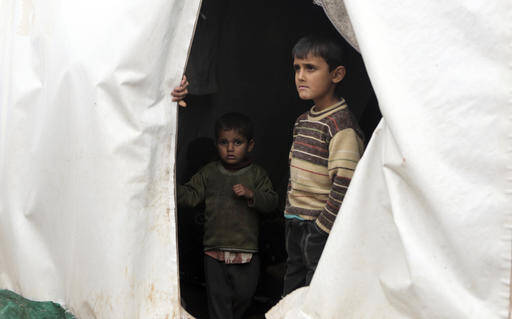Our group, a bus full of U.S. college faculty and high school students, descended upon Aleppo during a month-long summer exploration of Syria and Jordan in 1993. Our arrival in Damascus had coincided with the United States’ renewed bombing of Baghdad the night before, so we discussed that at an afternoon meeting: How do we make sense of this to young students who thought the Iraq War had ended over a year ago?
We were briefed by a bishop of the Syrian Orthodox Church, who described Syria as a “model for religious co-existence,” where President Hafez al-Assad had just given the church a $2 million plot of land for a school.
I loved Damascus, including the Christian quarter, with the ancient “Street called Straight,” with the house of Ananias where, tradition holds, St. Paul had his eyesight restored after experiencing his vision on the road. George, one of the students, and I got a feel for the city’s streets as we jogged through them on several five-mile runs.
After a visit to the Golan Heights, followed by a briefing at the U.S. Embassy, we moved the next day to a confrontation with Hama. Here, in 1982, in a 27-day siege, President Hafez al-Assad, quelled an uprising by the Muslim Brotherhood by ordering the Syrian army to slaughter 40,000 citizens, including women and children, mutilate their bodies and throw them on the street.
Today, since discussion of the massacre has been suppressed, Hama is noted for its big water wheel—that is until his son Bashar al-Assad assumed the presidency and exhibited an inherited appetite for blood on a broader scale.
On the edge of Aleppo, the huge 13th-century citadel, sometimes called the Crusader Castle, with its towers and high walls and long passageways, looms above the city amidst the remains of Hellenistic, Roman and Byzantine ruins. This city, which dates back to 4,300 B.C., has, in the past six years of civil war, seen 22 historical heritage sites totally destroyed. Today, the throne room of the citadel is filled with sand bags as the walls crumble and snipers pick off enemy targets from the windows.
The past week has been a turning point in the war. Assistance from Russia, Iran and Hezbollah has shifted the battle in Assad’s favor. Meanwhile, agreements to allow the city’s civilian inhabitants an opportunity to escape have been established and broken again and again, each side blaming the other. We read of the 10-year-old girl lying with broken bones in the medical unit’s hallway floor shouting, “Get me out of Aleppo. I am afraid. I am cold. My back is hurting me. Where is my doctor?” (The New York Times, Dec. 15). And the government presses for the release of prisoners and the bodies of dead soldiers.
The New York Times, the Los Angeles Times and The Guardian speak in blistering editorials that repeat similar themes: the excruciating pain of witnessing this horror from a thousand miles away while unable to comfort the victims; the interventions of Mr. Putin—bombing civilian neighborhoods, blocking food, fuel and medical supplies—violate international law; the failure of the U.N. Security Council to force President Assad to make political compromises and avoid war; the capture of Aleppo will not end the war; the government will control only one-third of the territory, leaving rebels and Islamists in the north and south.
Today, those who rode our bus in 1993 study the press coverage and look back in pain and anger. My running partner grew up to serve his country and is now a lieutenant colonel in the U.S. Air Force on the staff on NATO.
What have we learned? I was struck by a rebel, Hisham Skeif, preparing to leave Aleppo, who had thought hard about how the original uprising had gone wrong. His decision is radical, it might also be true. He concluded that the mistake had been to resort to arms. “Today, hours before we leave, I say that our biggest mistake was carrying weapons” (The New York Times, Dec. 16).
The fate of rebel-held Aleppo spells abject failure of the west’s contradictory and piecemeal policies. It is a humiliation for the U.N. Its fall will be an unequivocal victory for Russian strategy. Aleppo will join an infamous list of cities whose names are synonymous with mass crimes committed while the world looked impotently on (Dec. 9).








